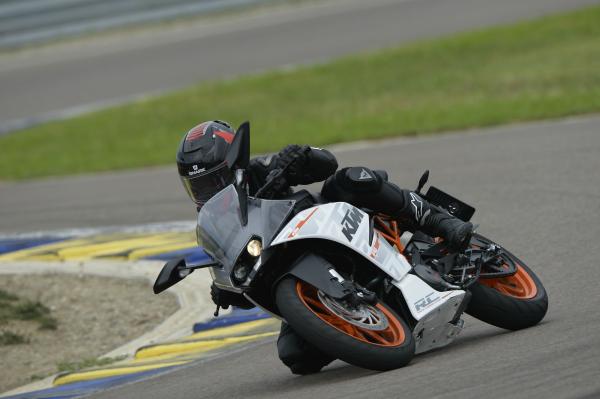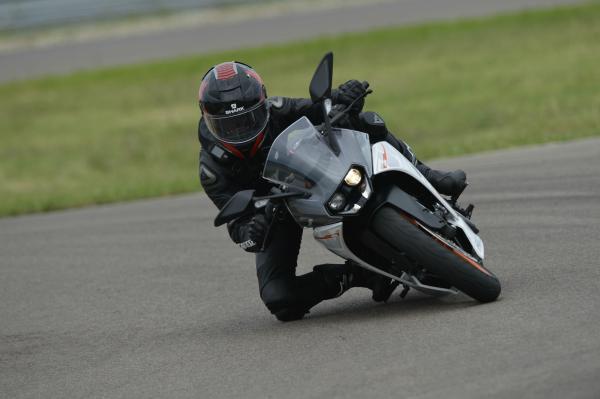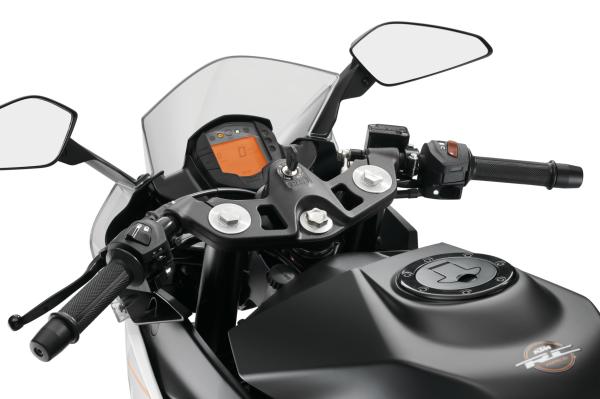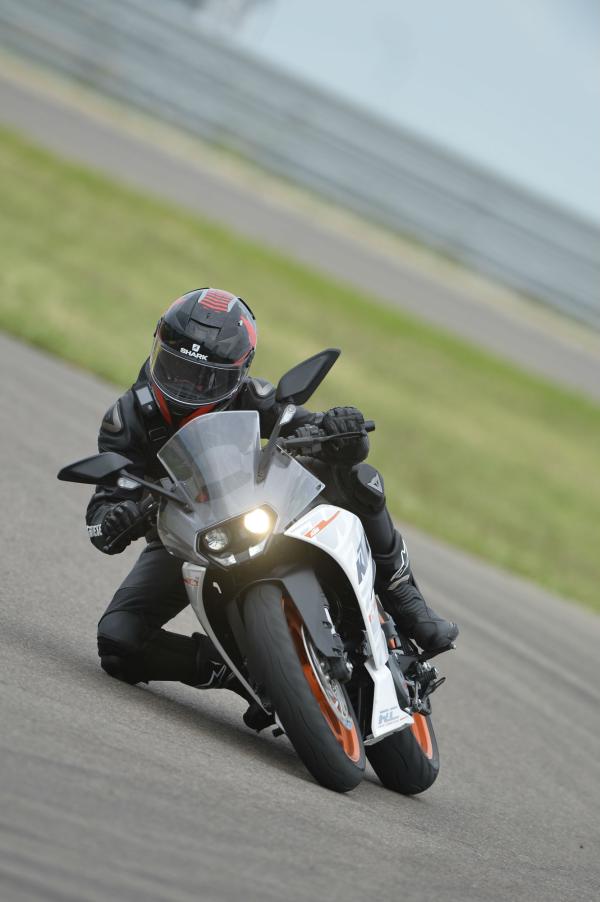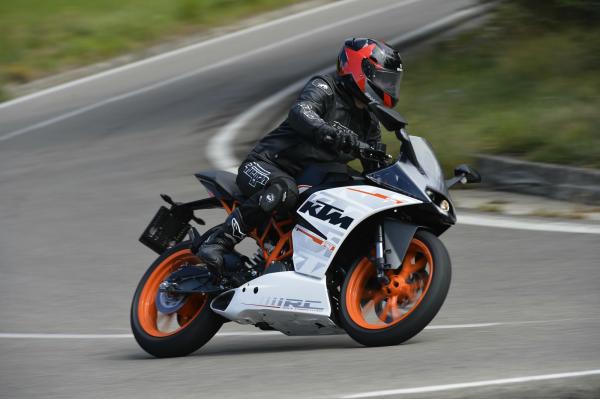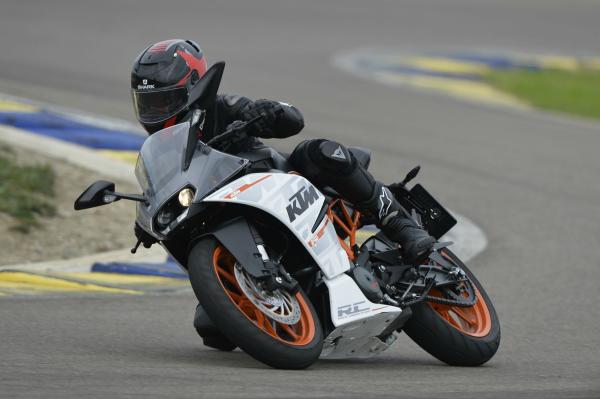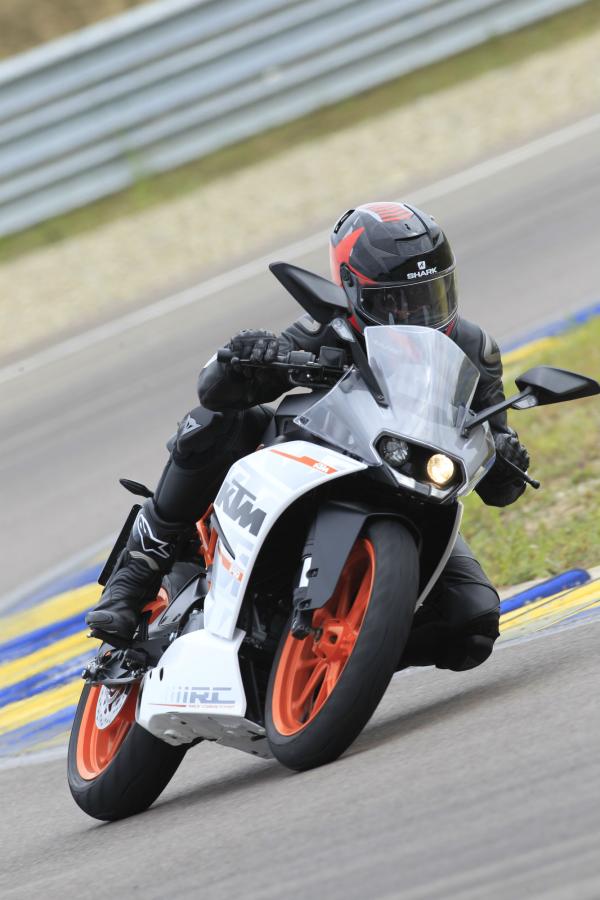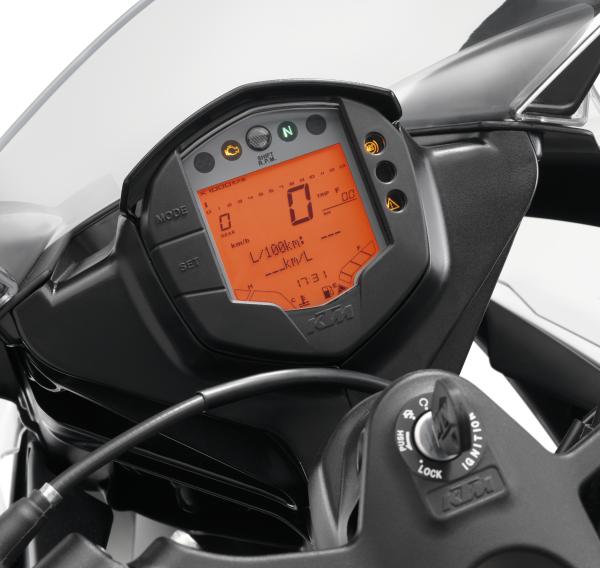First ride: KTM RC 390 review
Miss two-stroke 250s? Try one of these
YOU can get a pilot's licence at 17 but to do a single motorcycle test for a full, unrestricted bike licence, you must be 24.
Any younger and as a new rider you'll have to spend time restricted to 48hp (35kw) with an A2 licence.
That makes A2 motorcycles one of the most important classes there is - and KTM's new RC 390 has instantly become one of the most important machines in the class.
In a market that will demand excitement, the RC 390 delivers it possibly more than anything else currently available.
At 43.5hp, it doesn't make the maximum power allowed under A2 rules. However, because it's light, it does make bang on the optimum power-to-weight ratio allowed, at 0.2kw/kg.
But there's more to the story. Based on its claimed dry weight of 147kg, the RC 390 actually exceeds the power-to-weight ratio limit, at 0.24kw/kg.
KTM have interpreted the limit as referring to wet weight (and there's nothing to suggest they can't) while competitors appear to have made the more conservative assumption that it means unfuelled. So Honda's CBR500R meets the limit dry, and makes less power-per-kilogramme once there's fuel in it. But the RC 390 only meets the limit with fluids in it. That gives it the best power-to-weight ratio in its class, matched only by KTM's own Duke 390, which uses the same engine and principles.
Unlike the Duke, the RC is a sports bike. In terms of power, weight and attitude, it's about the closest thing in production today to a two-stroke 250 twin of the 1980s, like Yamaha's TZR250.
At £4,999, it's £500 more than the Duke 390 but still a bit less than the CBR500R, which is £5,299 on the road.
It's the second bike in the RC range after the 125 version, which was launched earlier this year.
The engine is unchanged from the Duke 390 and shares the same gear ratios, air box and exhaust. It's revy for a 375cc single, with a good top-end surge, and no excessive vibes. A red light comes on at about 9,500 rpm and it hits a rev limiter at about 10,500.
Flat out the RC will show over 100mph on the clock but KTM says the rev limiter in sixth gear is at 99mph, making that the genuine top speed.
The gearbox is smooth and while it's fun chasing that top-end peak with frequent shifts, there's also enough use-able mid-range. At the launch at the Modena circuit in Italy yesterday, third gear took care of most of the tight turns.
The steel trellis frame also comes from the Duke range, but with the head angle reduced by 1.5° for quicker steering. The wheelbase is slightly shorter, there's 5mm less front suspension travel and the rear-sets have been moved back.
The RC 390 is agile, quick to turn and as easy to toss around as its compact dimensions suggest, making it really confidence-inspiring on track. There's a good level of grip from the Metzeler Sportec M5 tyres too.
Sophisticated Bosch ABS comes as standard but there isn't quite enough bite from the 300mm single front disc. There is plenty of power but you have to pull hard on the lever to find it. Using two fingers, you can find yourself wishing you'd moved them further out along the lever before braking.
The upside-down 43mm WP forks provide firm front suspension but the rear shock, also WP, is much softer. A portion of the 150mm of travel is taken up by an 11-stone rider sitting on the bike.
On the road, inevitably the back end can bounce up and down in corners. Feedback from both front and rear tyres is good though and on the smooth track the soft shock wasn't an impediment. Preload is adjustable and the test bikes were on setting five of 10.
The riding position is a bit more upright than the RC 390's aggressive styling might suggest. The 'clip-on' bars aren't really clip-ons at all. Instead of being mounted on the forks, they bolt onto the forged aluminium top yoke. It makes for a sporty but comfortable position and also helps give the RC 390 a much more generous steering lock than typical of sports bikes.
The compact digital instrument panel is similar to the Duke's, with information including average speed and fuel consumption, range and a gear indicator. Mine was claiming an average of 50mpg after a day's riding on road and track. With a slightly meagre 10-litre tank, that gives it a theoretical range of 110 miles before you're pushing. No doubt the figures would be vastly improved by not doing two 20-minute track sessions.
A clever feature, which KTM says is a first on any motorcycle, is the single seat unit which isn't really a single seat unit. What looks like a matt black cowl behind the rider is in fact a pillion seat, made of a mix of foam and plastic, with grab handles hidden underneath. Apart from looking good, it won't get scratched, and feels surprisingly well padded.
The same can't be said of the rider's seat, which is small and hard. It's relatively high, at 820mm, but putting both feet flat on the ground is easy for an average-height rider because it's narrow. There's a storage compartment underneath big enough for a disc lock.
A plusher 'ergo seat' is available as an accessory, and if you plan to ride far you'd probably benefit from it.
The RC 390 doesn't make a particularly evocative noise as standard so it would also be interesting to hear how much the optional Akropovic slip-on improves things.
Like the Duke 125 and 390, and the RC 125, the RC 390 is built in India by Bajaj, and KTM says it's the 'flagship' of that operation.
There's room for improvement. A fairing panel on mine made an annoying rattle at tick-over. The mirrors are big but on arms too short, so you can't see what's behind you, and the right-hand one kept vibrating itself into a new position. That didn't happen to the last Thai-built CBR500R I tested.
But if the KTM's got a few rough edges, it makes up for it with more engaging performance, and that will be more important to many 19-23-year-olds, the age group affected by A2 rules.
Its other closest current competitor, Kawasaki's Ninja 300R, is trounced by the RC 390's specs, and the ABS version is more expensive, at £5,199.
It also won't go unnoticed on those younger riders that the KTM is the basis for the RC 390 Cup race bikes used in the single-make ADAC Junior Cup series. A race graphics kit and all the higher-spec components used by the cup bikes are available as accessories.
The RC 390 has pushed the limits of A2 and taken the class to a level it needs to go to, one of outright excitement, not just excitement within boundaries. It's a persuasive new reason for 19-23-year-olds to take up motorcycling but it's also likely to appeal to older, fully qualified riders, especially those who miss the lightweight, sharp-handling two-strokes they grew up with. You need an A2 licence to ride an RC 390, but you don't need an A2 licence to want one.
Model tested: KTM RC 390
Price: £4,999 plus on-the-road charges
Power: 44hp
Torque: 25.8lbft
Average fuel economy (road and track): 50mpg
Dry weight: 147kg
Tank capacity: 10 litres
Seat height: 820mm
Available: October
Read our Honda CBR500R first-ride review
Read our Kawasaki Ninja 300 first-ride review

